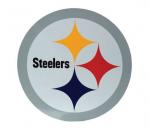A group of researchers plans to send a box into space that will eventually house the coldest spot in the universe.
All in the name of science.
The team at the Jet Propulsion Laboratory's Cold Atom Laboratory has designed the box, which contains lasers, a vacuum chamber and an electromagnetic "knife." The lasers in the box will create an environment a few millionths of a degree above absolute zero.
Then, the electromagnetic knife will scrape off the hottest atoms in the box, and the rest of the atoms will cool down even further.
"In a sense, it is very similar to blowing on the top of a hot cup of coffee," said project scientist Robert Thompson, who oversees the Cold Atom Lab at NASA's JPL. "When you blow on the top of a cup of coffee you are helping the hottest atoms escape."
A few steps later, the tools in the box will cool the atoms to a billionth of a degree below absolute zero — roughly 100 million times colder than the temperature of space.
"It is pretty incredible," Thompson said, "and we do have a few experiments on Earth that you can reach these kinds of temperatures, but we hope to be able to go even lower in space."
By contrast, the coldest known place in the universe — outside of physics labs — is the Boomerang Nebula, which at its coldest spot is just above absolute zero.
The team is sending the rig to the International Space Station this summer, because the zero gravity environment will give them the chance to see things they would not be able to observe on Earth.
The atoms inside the box will be cooled to the point where the atoms change their behavior in ways that could give scientists an even finer understanding of matter, gravity, even dark matter and dark energy.
Physics holds that atoms can behave like both particles and waves. Under normal conditions, these gas atoms bounce off of one another in all sorts of directions. (Picture a room full of rubber balls.)
But under the extreme freezing conditions, gas atoms act more wavelike, so as they cool, the atoms slow down and their wavelengths begin to overlap.
"Physicists have been trying to cool things for a long time," Thompson said, adding that cooling has previously led to valuable discoveries such as superfluid helium and superconductivity.
Physicists are able to create these freezing temperatures on Earth, but the force of Earth's gravity quickly acts on the atoms, giving scientists only a fraction of a second to observe their behavior in the lowest quantum state.
But in space, the team imagines they will be able to observe the atoms in their wave-like state for 5-10 seconds. That may not sound like a much time, but it is plenty to gain an unprecedented amount of knowledge.
The research could lead to new understandings of matter, dark matter, and could lead to the development of new sensors, quantum computers and atomic clocks used in spacecraft navigation, according to a news release from NASA.
One of the things Thompson and colleagues would like to do is something that could be considered a recreation of Galileo's Leaning Tower of Pisa experiment, but dropping atoms from different elements, rather than dropping far larger objects.
Another fruit of the effort could be atom interferometers, which "are incredibly sensitive to a lot of things we would want to measure, such as gravity and magnetic forces," Thompson said.
Interferometers come in configurations and use different technologies, but in general they are instruments that can obtain extremely precise measurements of physical phenomena.
Another kind of interferometer, at the lab LIGO, was used to confirm the existence of gravitational waves, for example.
Apart from what they could tell physicists, the highly sensitive nature of atomic interferometers could also prove valuable for navigation systems in spacecraft.
"The philosophy was we build this mini-lab in space and put in some of the standard tools and hope that investigators will use it to do some of these different investigations," Thompson said.
Torrent Invites! Buy, Trade, Sell Or Find Free Invites, For EVERY Private Tracker! HDBits.org, BTN, PTP, MTV, Empornium, Orpheus, Bibliotik, RED, IPT, TL, PHD etc!
Results 1 to 1 of 1
-
03-10-2017 #1Donor





















- Reputation Points
- 37911
- Reputation Power
- 100
- Join Date
- Aug 2014
- Posts
- 2,655
- Time Online
- 39 d 23 h 33 m
- Avg. Time Online
- 16 m
- Mentioned
- 393 Post(s)
- Quoted
- 106 Post(s)
- Liked
- 1390 times
- Feedbacks
- 114 (100%)
NASA plans to create the coldest spot in the universe


 2Likes
2Likes LinkBack URL
LinkBack URL About LinkBacks
About LinkBacks





 Reply With Quote
Reply With Quote





